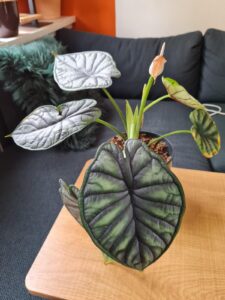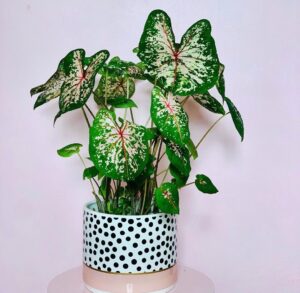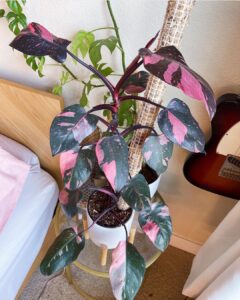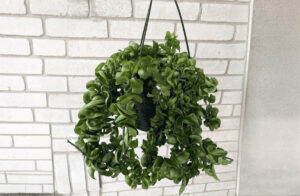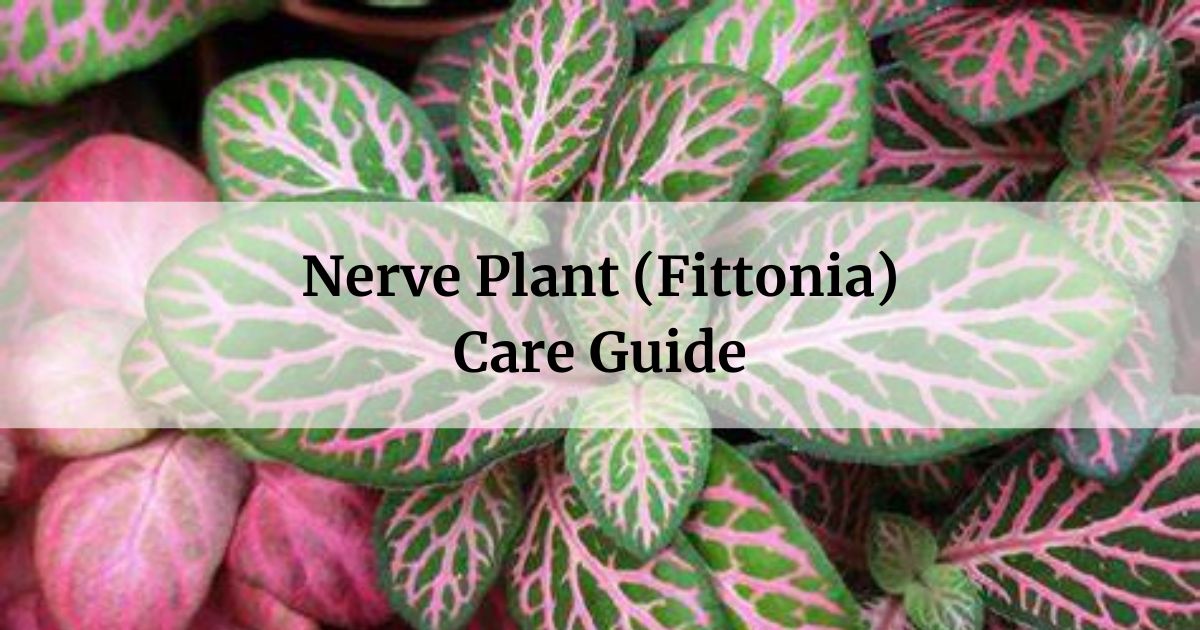
The nerve plant, or fittonia, is a delightful houseplant that has captured the hearts of many homeowners. With its vibrant, contrasting veins that resemble a network of nerves, this plant adds a touch of tropical elegance to any space. I’ve found the nerve plant to be a rewarding and relatively easy-to-care-for companion.
- Pros
- Visually stunning with its intricate vein patterns
- Tolerant of lower light conditions
- Relatively low maintenance
- Cons
- Can be sensitive to underwatering
- May require more frequent watering compared to other houseplants
- Potential toxicity to pets if ingested
In this article
- 1 Appearance of the Nerve Plant
- 2 Varieties of Nerve Plants
- 3 Light Requirements for the Nerve Plant
- 4 Watering the Nerve Plant
- 5 Fertilizing the Nerve Plant
- 6 Potting the Nerve Plant
- 7 Propagation of Nerve Plant
- 8 Growth and Development of the Nerve Plant
- 9 Managing Pests and Diseases for the Nerve Plant
- 10 Complimentary Plants with your Nerve Plant
Appearance of the Nerve Plant
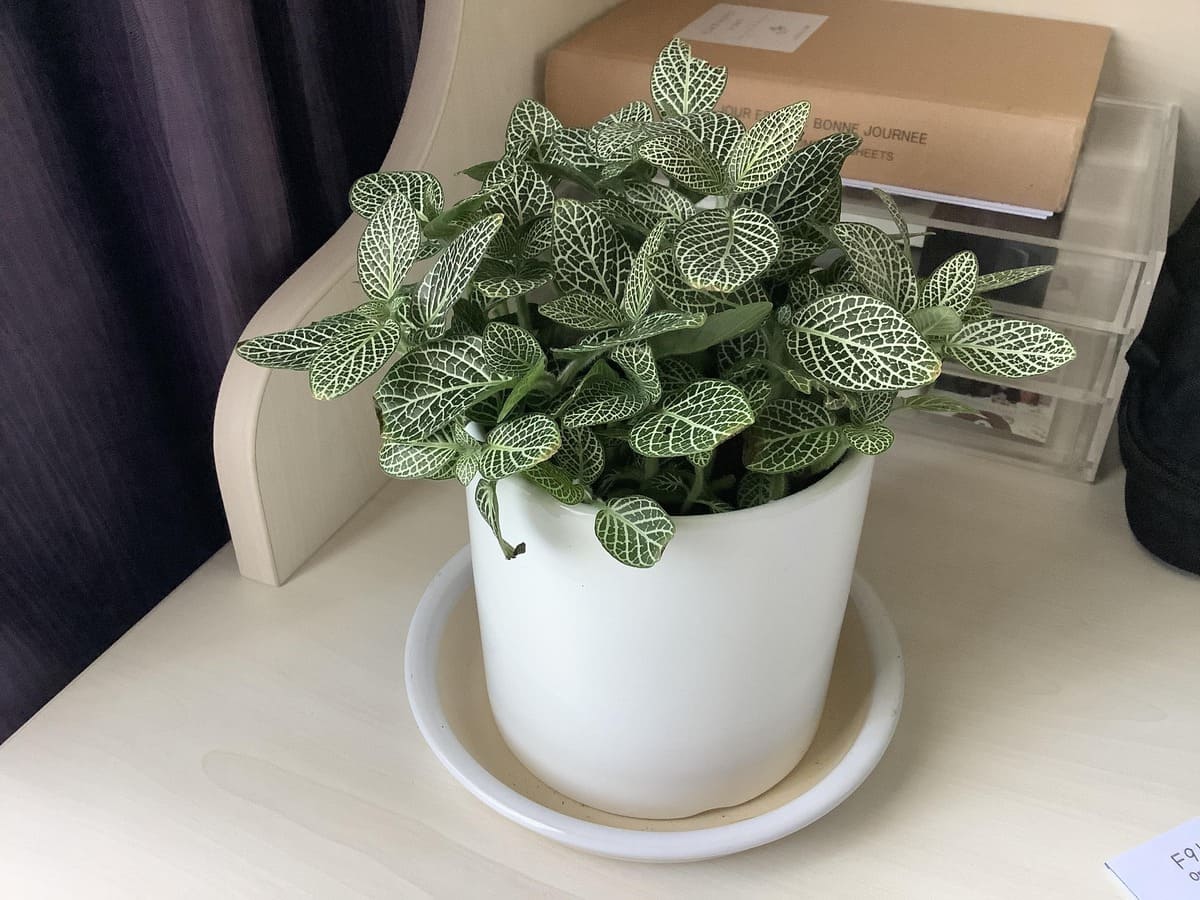
The nerve plant is a small, trailing houseplant known for its distinctive foliage. The leaves are typically oval-shaped, with bold, contrasting veins that create a mesmerizing pattern. The leaves can range in color from deep green to shades of pink, red, and white, depending on the variety. These compact plants can grow to around 6 inches in height and can trail up to 12 inches in length, making them an excellent choice for hanging baskets or shelves.
Great for People who:
Want to add a touch of tropical flair and intricate beauty to their indoor spaces.
Great for these Spaces:
The nerve plant thrives in areas with higher humidity, such as bathrooms or kitchens, where it can display its vibrant colors to their fullest potential.
Caring for Nerve Plant
Nerve plants are generally considered beginner-friendly, as they are relatively low maintenance. However, they do require consistent watering to prevent the leaves from wilting or drying out.
Toxicity Level of Nerve Plant
The nerve plant is considered non-toxic to both humans and pets, making it a safe choice for homes with children or furry companions. This is a reassuring feature, as it allows you to enjoy the plant’s beauty without worrying about potential harm.
Varieties of Nerve Plants
There are many varieties of nerve plants, with Fittonia albivenis showcasing the most diversity. Here are some of the most popular varieties:
- Silver Nerve Plant (Fittonia albivenis ‘Argyroneura’): Features deep green leaves with silvery-white veins, ideal for terrariums due to its compact growth.
- Daisy Nerve Plant (Fittonia albivenis ‘Daisy’): Known for its large, spherical leaves with gray and green stripes, requiring more humidity and light.
- Red Nerve Plant (Fittonia albivenis ‘Pearcei’): Displays dark green leaves with striking red veins, thriving in humid conditions.
- Pink Angel Nerve Plant (Fittonia albivenis ‘Angel Snow’): Has light green leaves with delicate pink veins, larger and rounder than other varieties.
- Frankie Nerve Plant (Fittonia albivenis ‘Frankie’): Recognized for its pale pink leaves with green lines, suitable for low-light environments.
- Fortissimo Nerve Plant (Fittonia albivenis ‘Fortissimo’): Features bright pink and red lines on dark green leaves and is known for rapid growth.
Additional notable varieties include Fittonia verschaffeltii (often featuring vibrant red or pink veins) and smaller variants like Mini White and Pink Angel
Light Requirements for the Nerve Plant
Bright Indirect Light: The nerve plant prefers bright, indirect light to maintain its vivid colors and healthy growth. Placing it near a sunny window, but out of direct sunlight, is ideal.
Low Light: While the nerve plant can tolerate lower light conditions, the leaves may lose their vibrant hues and become more subdued.
Direct Sunlight: Direct sunlight can scorch the delicate leaves of the nerve plant, so it’s best to avoid exposing it to intense, direct sun.
| Light Conditions | Effect on Nerve Plant |
|---|---|
| Bright Indirect Light | Optimal for vibrant colors and healthy growth |
| Low Light | Leaves may lose their vibrant hues |
| Direct Sunlight | Can scorch the delicate leaves |
Watering the Nerve Plant
Consistent watering is key to the well-being of the nerve plant. The soil should be kept consistently moist, but not waterlogged. When the top inch of the soil feels dry, it’s time to water the plant. Avoid letting the soil completely dry out, as this can cause the leaves to wilt and become crispy.
- Check the soil moisture regularly by sticking your finger into the soil.
- Water the plant when the top inch of soil feels dry.
- Water thoroughly, ensuring the soil is evenly moist but not waterlogged.
- Avoid letting the plant sit in standing water.
Fertilizing the Nerve Plant
Nerve plants benefit from a balanced, water-soluble fertilizer applied during the growing season. This helps to maintain their vibrant colors and promote healthy growth.
- Use a balanced, water-soluble fertilizer at half-strength.
- Apply the fertilizer every 2-4 weeks during the spring and summer months.
- Avoid fertilizing during the fall and winter, as the plant goes into a more dormant state.
| Month | Recommended Dosage |
|---|---|
| Spring (March-May) | 1/2 strength |
| Summer (June-August) | 1/2 strength |
| Fall (September-November) | No fertilizer |
| Winter (December-February) | No fertilizer |
Potting the Nerve Plant
Nerve plants thrive in well-draining potting mix. Choose a container with drainage holes to prevent the soil from becoming waterlogged. As the plant grows, you may need to repot it every 1-2 years to provide more space for the roots.
- Use a well-draining potting mix, such as a blend of peat moss, perlite, and vermiculite.
- Ensure the container has drainage holes to allow excess water to escape.
- When repotting, choose a container that is only slightly larger than the previous one.
- Gently remove the plant from its current pot and place it in the new container, being careful not to damage the roots.
- Water the plant thoroughly after repotting.
Propagation of Nerve Plant
Propagating nerve plants is a rewarding experience and a great way to create new plants. I’ve had success with propagating nerve plants through stem cuttings. Simply take a 4-6 inch stem cutting, remove the lower leaves, and place it in a container of water or well-draining potting mix. Within a few weeks, you should see new roots forming, and you can then transplant the cutting into its own container.
- Take a 4-6 inch stem cutting from a healthy nerve plant.
- Remove the lower leaves, leaving only the top leaves intact.
- Place the cutting in a container of water or well-draining potting mix.
- Keep the soil or water moist but not waterlogged.
- Within 2-4 weeks, you should see new roots forming.
- Once the roots have established, transplant the cutting into its own container.
Growth and Development of the Nerve Plant
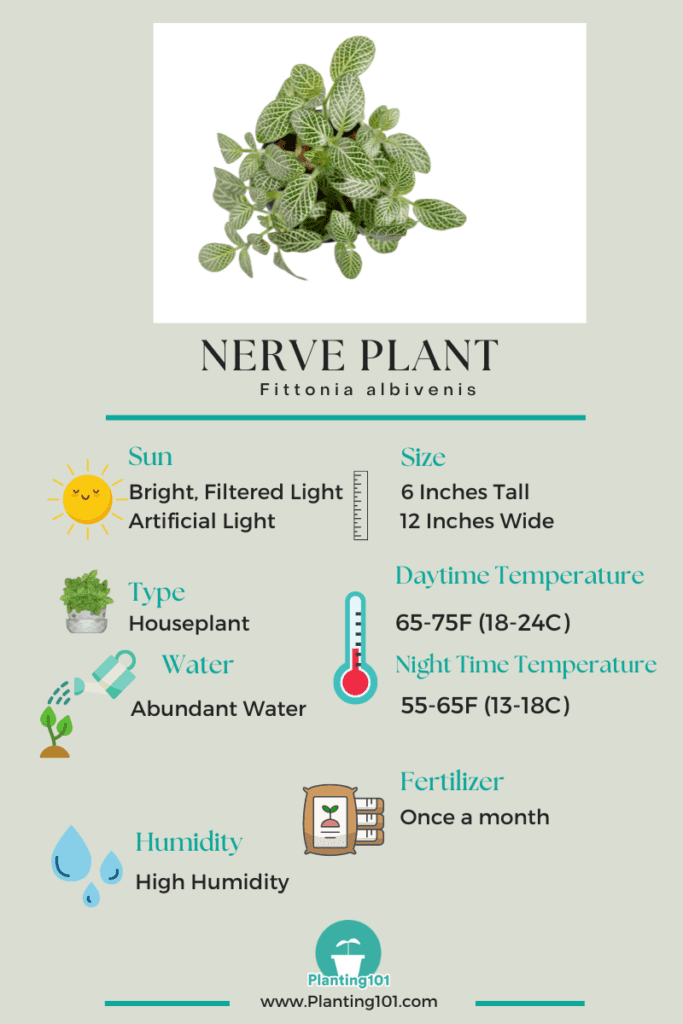
Nerve plants thrive in warm, humid environments with bright, indirect light. They prefer daytime temperatures between 65-75°F (18-24°C) and can tolerate slightly cooler temperatures at night. Maintaining consistent soil moisture and humidity levels is crucial for the nerve plant’s growth and vibrant colors.
Regular cleaning of the leaves can also help to maintain the plant’s appearance. Use a soft, damp cloth to gently wipe down the leaves, removing any dust or debris that may have accumulated.
Managing Pests and Diseases for the Nerve Plant
Nerve plants are generally quite resilient, but they can be susceptible to common houseplant pests, such as spider mites, mealybugs, and aphids. Regular inspection and prompt treatment can help keep these pests at bay. Additionally, overwatering or poor air circulation can lead to fungal diseases, such as root rot or powdery mildew. Maintaining proper watering and air flow can help prevent these issues.
Complimentary Plants with your Nerve Plant
The nerve plant pairs well with other lush, tropical-inspired houseplants, such as:
These plants can create a cohesive and visually stunning arrangement, complementing the nerve plant’s intricate foliage.
Frequently asked questions
How often should I water my nerve plant?
If it’s not going to be in a high humidity area then you’ll have to watch it. When the leaves start to flop or turn over water it. They’re thirsty as they get so I find myself watering or checking at least every three or so days. I drench mine until all the water comes out. Then wait til it nearly dries out before watering again.
Are nerve plants safe for pets?
Yes, nerve plants are non-toxic to both humans and pets, making them a safe choice for homes with furry friends.
What type of soil does a nerve plant need?
Nerve plants prefer a well-draining potting mix, such as a blend of peat moss, perlite, and vermiculite.
The nerve plant, with its captivating vein patterns and vibrant colors, is a truly unique and captivating addition to any indoor space. By providing the right care and environment, you can enjoy the beauty and charm of this delightful houseplant for years to come.


